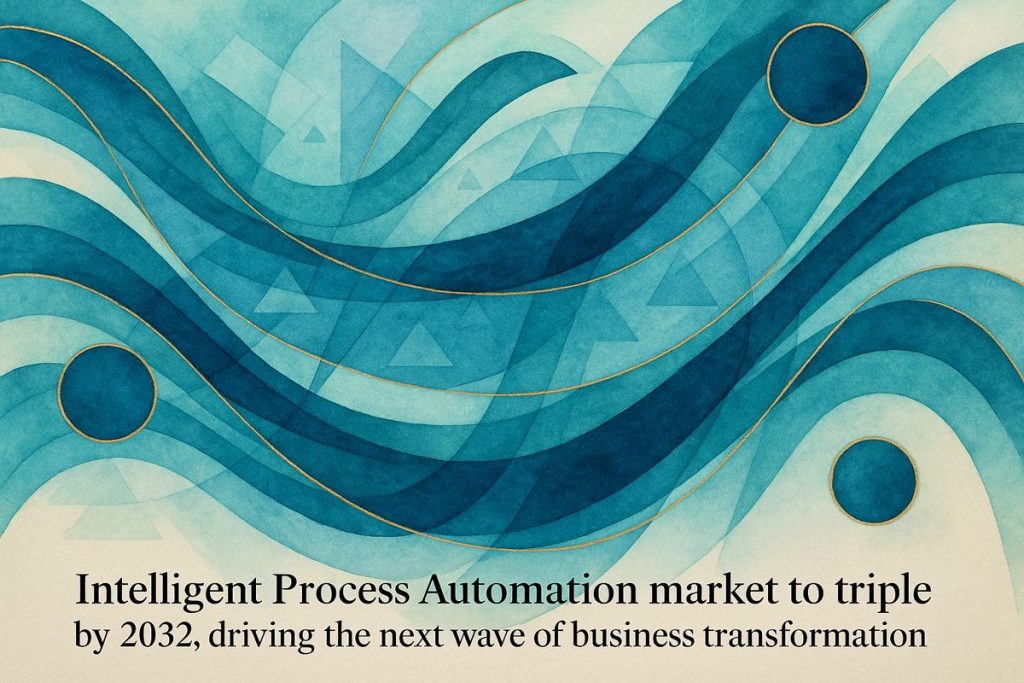Intelligent Process Automation (IPA) uses smart technology like AI and machine learning to help businesses work faster, smarter, and cheaper in 2025. It handles tasks from answering customer questions to checking for fraud, making life easier in industries like retail, finance, and medicine. IPA learns as it goes, handling messy real-world problems better than old-school robots ever could. The IPA market is booming, but sometimes tech headaches still pop up, reminding us that humans are needed too. In the end, IPA is like a behind-the-scenes partner, making work smoother but not replacing the human touch.
What is Intelligent Process Automation (IPA) and how is it transforming businesses in 2025?
Intelligent Process Automation (IPA) combines AI, machine learning, and robotic process automation to streamline complex business tasks in 2025. IPA automates processes like customer service, compliance, inventory, and finance, delivering faster results, improved accuracy, and significant cost savings across industries such as retail, finance, life sciences, and logistics.
A few years back, the idea of machines handling nuanced business tasks felt a bit like expecting your coffee maker to write your quarterly reports—a charming fantasy, doomed by reality. Now, in 2025, Intelligent Process Automation (IPA) is less science fiction and more a daily grind. It’s the quiet hum behind the scenes—the scent of progress, subtle but unmistakable, like ozone after a summer storm. Let’s pull back the curtain on this blend of AI, machine learning (ML), and robotic process automation (RPA) as it tangos with the messy, glorious business world.
The Heart of IPA: Precision, Prose, and a Dash of Kafka
Every so often, I have to stop and ask myself: Is “intelligent” in IPA a promise or a dare? After watching a Salesforce bot parse 10,000 customer emails in under three hours—while I struggled to find my own inbox—I’d wager on “promise.” When properly fused with platforms like SAP or the upstart AI accelerator Automatio AI, IPA morphs into a sort of business exoskeleton: invisible but undeniably powerful.
Take customer relationship management. In my last project, we watched IPA bots extract sentiment from customer calls faster than a barista can steam oat milk. The bots sifted through audio, flagged frustration spikes, and even nudged agents mid-call with real-time prompts. Was I impressed? Absolutely—though a whiff of envy lingered. My own note-taking has never scaled quite so elegantly.
But IPA isn’t just about speed. In e-commerce trenches, it’s become the unsung hero: bots reconcile payments, chase down returns, sniff out fraud (sometimes literally, if we’re talking about the hyperspectral scanners used by select logistics giants). One client in pharma told me how IPA helped cut regulatory submission timelines by 40%. That’s not hyperbole; that’s a quarterly report with fewer migraines.
Industry Tangents: IPA Lets the Dominoes Fall
IPA’s reach is hydra-headed, sprawling across sectors like a palimpsest overwritten with each industry’s quirks. In life sciences, the journal “Nature Digital Medicine” recently chronicled how IPA-driven pattern recognition shaved weeks off clinical trial recruitment. Meanwhile, in finance, the likes of Comidor swear by IPA for real-time KYC validation and compliance auditing. No more rummaging through Excel labyrinths at 11 p.m.—I’ve been there. Never again.
Retailers use IPA not just to restock shelves but to predict which SKUs will fly off next week—think Manhattan Associates’ machine learning modules whispering in inventory managers’ ears. Shipping companies, meanwhile, have IPA orchestrate route optimizations mid-blizzard. I can practically hear the relieved sighs from logistics coordinators.
And let’s not forget insurance. I once chatted with an actuary who confessed that IPA freed her from the Sisyphean task of claims triage. “I have time to think big picture,” she said, eyes bright with—what was it? Relief? Awe? Maybe both.
The IPA Market: Boom, Bust, and the Occasional Borscht Stain
I’d be remiss not to mention the numbers—after all, what’s a transformation narrative without a crescendo of statistics? The IPA market, once a backwater, now rushes like the Volga in spring: from a $15 billion valuation in 2023, it’s expected to crest nearly $48 billion by 2032 (SNS Insider, Market Research Future). That’s a compound annual growth rate that’d make even SAP’s CFO blink twice.
Cloud has become the default flavor—over 60% of fresh IPA deployments live there now, liberated from the fetters of on-premises kludges (BVP State of the Cloud 2024). End-to-end automation suites are edging out piecemeal bots; about 68% of IPA dollars flow toward comprehensive platforms, which, if anything, makes integration smoother (and my sleep less fitful) (Statista).
But it’s not all roses. Remember when I tried to automate invoice processing in a legacy ERP system? Disaster. I’d forgotten to check for cross-platform compatibility—rookie mistake. After a week of error logs that read like Dostoevsky footnotes, I saw the light: always, always map your data flows before you buy the shiny new toy.
From RPA to IPA: The Quantum Leap (and Its Growing Pains)
Traditional RPA had its place—it handled structured, repetitive work with the grim efficiency of a Soviet factory line. But throw in an unsorted PDF or an irate customer’s handwritten fax, and the wheels came off. IPA, by contrast, adapts; it learns. Maybe not quite like a human, but close enough that I sometimes catch myself anthropomorphizing the bots (they still don’t laugh at my jokes).
IPA’s self-improving workflows mean they actually get better—or at least less error-prone—the more you use them. They spot bottlenecks, flag exceptions, and suggest tweaks with the zeal of a perfectionist intern. That said, I did once have an IPA bot “optimize” a process so aggressively it skipped a mandatory compliance check. Oops. Lesson learned—build in guardrails.
And here’s a rhetorical question: Will IPA ever fully replace human judgment? I doubt it. There’s something about the crunch of real-world data underfoot—the unpredictability, the texture—that machines still can’t quite taste. But as a partner, a catalyst, a silent co-pilot? Absolutely essential.
Coda: Best Practices and a Nod to Human Fallibility
So, what’s the play
